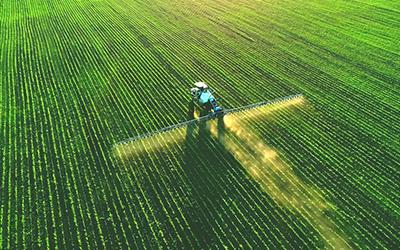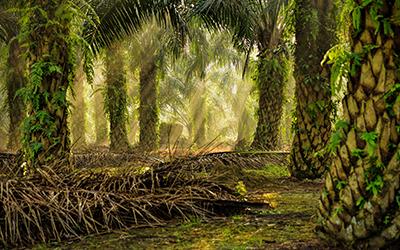
Why Fertilizer is Important in Modern-Day Farming
News Room An Overview of Why Fertilizer is Important for Modern-Day Farming China’s average crop production has increased by six times in the last four
As the novel Coronavirus rapidly spread across six continents, it resulted in several socioeconomic and geopolitical ramifications. Amongst the various sectors affected by the outbreak, the global food pricing and supply chain have been worst hit. However, the impending avalanche in this industry was set off much in advance as it dangerously teetered on edge. If anything, COVID-19 aggravated the situation.
Here’s a look at the global food demand and supply before and after COVID-19:
As stated previously, the food industry was already experiencing stress with price surges written in the future. Some contributing factors include:
The international health emergency further exacerbated food insecurity around the world, with segments of the population being pushed into the clutches of hunger and starvation. Here’s an overview of the impact of COVID-19 on major food producers and supply chain stakeholders:
Despite technological advancements, farming continues to be a labor-intensive industry. With large-scale labor migration, finding skilled/unskilled workers for farming activities presented further challenges.
Finding help no longer appeared to be an economically viable option as it did in the previous instances. In the event that farms could arrange labor, following COVID-compliant protocols to reduce the risk of exposure added to the complexity.
Most importantly, the restriction on the movement of goods and people resulted in pockets of surplus and scarcity.
In the case of the former, farmers and herders had to resort to extreme measures, such as plowing crops, spilling milk, and breaking eggs. Eventually, if they are to take to culling livestock or missing out on sowing periods, it could result in long-term production shortages.
As for the latter, the procurement of items, such as fertilizers, seeds, etc., became an insurmountable challenge.
Companies operating in the food processing and packaging sector also faced a unique set of challenges. For starters, the concept of having employees operating in close quarters for maximum productivity was now completely out of the question.
Next, the industry witnessed a heightened demand for specific items (such as food products with longer shelf lives) of certain sizes (smaller packs for end-consumers rather than institutional packs) and certain packaging (primarily disposable packaging). Subsequently, the demand for high-end, luxury products trickled to a stop.
The demand-supply gap was heightened due to the non-availability of raw or intermediate products. Resultantly, it fueled storage competition and price surges.
Finally, the mass closure of food processing and packaging plants caused dents in the supply and value chain.
Before the COVID-19 pandemic, food distributors had been exploring various technologies to smoothen the process and make it seamless. However, the well-oiled supply chain machine started to sputter in light of COVID-related shutdowns and travel restrictions.
Resultantly, inbound and outbound orders came to a screeching halt, resulting in logistical bottlenecks, inflated inventory, and warehousing shortage. While storage by itself is expensive, cold chain storage emerged as a graver cause for concern. Perishable items also attracted immediate attention, thereby hiking the overall financial implications.
Distributors attempted to redirect their service to grocery suppliers or restaurants that had opened for takeouts. However, this change in the supply chain added to the operational costs. The well-woven network of producers, suppliers, and consumers had started to crumble.
With the closure of restaurants and eateries, grocery stores witnessed a massive peak in demand for goods. However, this exponential demand came with an extraordinary share of obstacles.
First, the stores had to continue offering their services while caring for their customers’ and employees’ health. The attempt to balance service with utmost hygiene involved regular sanitization, implementing social distancing, restricting customer entry, cleaning store surfaces, stocking shelves, offering home delivery, and managing inventory dynamically. Businesses also had to ramp up recruitment, fork out hazard-pay bonuses, and offer medical coverage to employees.
As healthcare professionals encouraged staggered timings to minimize social interactions, stores would have to remain open for extra hours. And, of course, the perpetual stress of managing and fulfilling orders always loomed in the background.
While eCommerce channels mitigated the disruptions, the third-party players also started to eat into the store’s profit margins.
Panic buying and hoarding were key traits of the frenzy caused as the news of the pandemic broke out. These knee-jerk reactions are a reflection of how the COVID-19 has left behind a lasting impact on consumer behavior. Apart from stockpiling food, the initial months since the pandemic struck witnessed the highest demand for eCommerce and home delivery services.
Furthermore, the pandemic also altered the spending patterns as buyers sought durable food options over indulging in exotic treats. People were spending 29% more on groceries than on cooked meals. As a result, the virus also phased out the eating-out culture and introduced eating-in.
Vulnerable families experienced severe economic distress, giving rise to further food insecurity.
The Coronavirus outbreak is aptly titled the “hunger pandemic” as it systematically dismantled the global food demand and supply chain.
With no certainty on the vaccine, the above issues will continue to plague the supply chain members even as governments relax norms. The demand-supply mismatch would also result in inflationary pressures in medium or long terms upon the reinstatement of demand. However, all of the factors depend on how capable we are in containing the virus and bouncing on the path to recovery.
At the same time, supply chain stakeholders are left to seek creative solutions through technological innovation and integration. And while it may be at the cost of profit margins, maintaining farm to shelf continuity will go a long way in ensuring food security even in such testing times.

News Room An Overview of Why Fertilizer is Important for Modern-Day Farming China’s average crop production has increased by six times in the last four

News Room Farming, beyond 2020 If farming intends to feed the global population, it would have to achieve the rate of growth as delivered by

News Room Everything You Need to Know About Palm Oil Palm oil has often found itself in the eye of the storm of controversy for